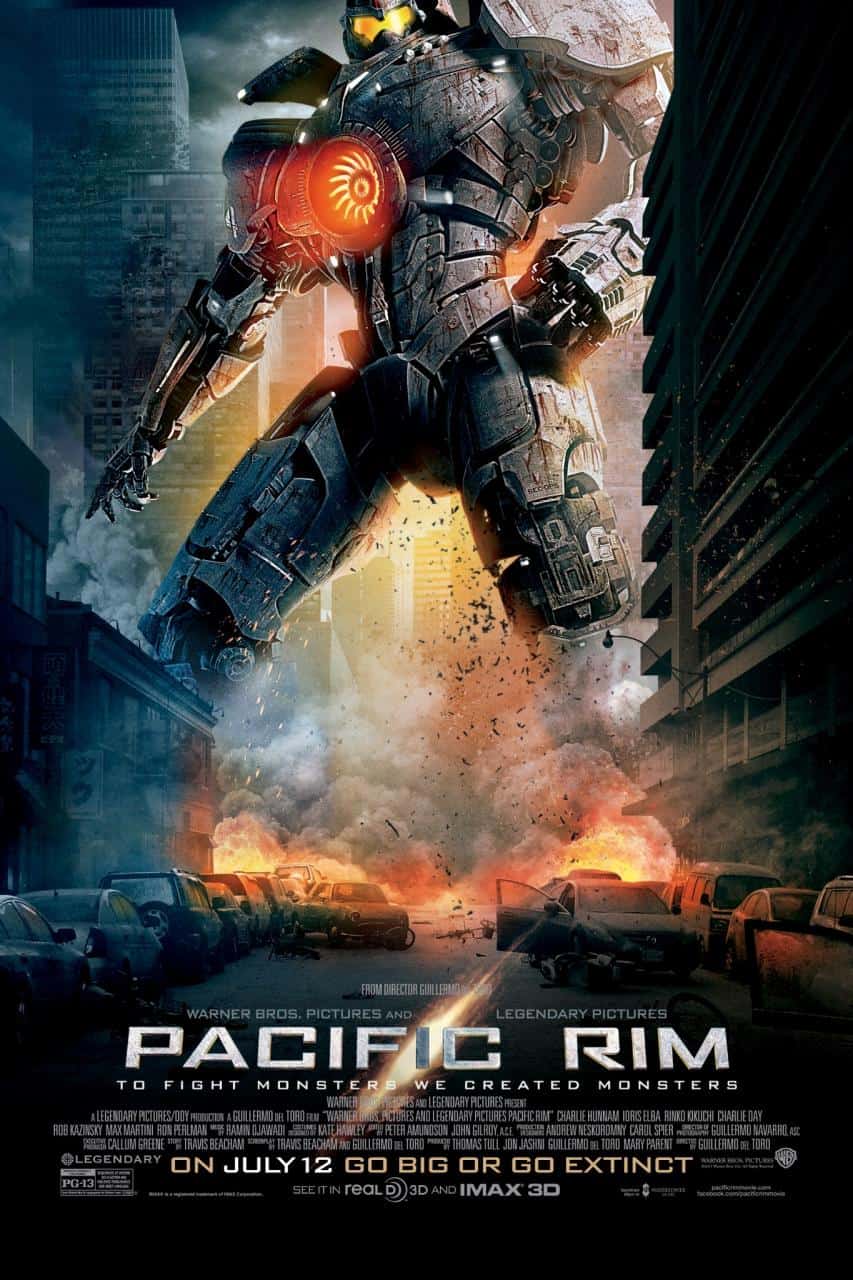When Pacific Rim smashed into theatres, director Guillermo Del Toro re-introduced North American audiences to an exciting genre of sci-fi epic. If you thought Roland Emmerich’s gargantuan, radioactively mutated lizard Godzilla was impossible in 1998, imagine the poor engineers hired to design and build 250-foot robots whose purpose is to destroy enormous monsters popping up from the Pacific Ocean left, right, and centre.
 To create the world of Pacific Rim, writers Guillermo Del Toro and Travis Beacham fused together two sub-genres of science-fiction:. the Japanese Kaiju, a word which literally translates to “strange creature,” and the classic Mecha, which concerns robots. These two sub-genres are used to set-up the film’s central conflict, between massive sea Kaiju and equally massive humanoid Mecha called Jaegers.. Both sub-genres are quite popular in Asia, where works like Godzilla and Transformers have their roots.
To create the world of Pacific Rim, writers Guillermo Del Toro and Travis Beacham fused together two sub-genres of science-fiction:. the Japanese Kaiju, a word which literally translates to “strange creature,” and the classic Mecha, which concerns robots. These two sub-genres are used to set-up the film’s central conflict, between massive sea Kaiju and equally massive humanoid Mecha called Jaegers.. Both sub-genres are quite popular in Asia, where works like Godzilla and Transformers have their roots.
What is intriguing about Pacific Rim is that it takes place in the 2020s;.the closeness to the present makes the question of whether or not our world will have similar technology and scientific capacities when it reaches that decade particularly interesting.
Each Jaeger requires two pilots, as a single’s pilot’s brain cannot handle the encumbrance of the giant robot. Therefore, the minds of the two pilots are merged to think together and therefore better fight the Kaiju. However, in this process each pilot can see the other’s memories and thoughts in his/her own mind. In late 2011, the University of California Berkeley cultivated a process by which visual activity recorded in the human brain can be reconstructed on a computer screen. In the study, three members of the research team sat in a functional Magnetic Resonance Imaging (fMRI) system for about four hours at a time. They were shown movie trailers, and the blood flow in the visual cortex of each of their brains was measured by the fMRI scanner.
The recorded data was analyzed by a computer program, which learned over time how to correlate the blood flow levels with three-dimensional pixels called voxels. The reconstructed images are not the sharpest, but a clear connection in appearance between the brain’s visuals and the physical visuals of the trailers is very apparent.
This technology has a long way to go to if we really want to merge minds with others or play our thoughts numerous times over . Nevertheless, if the brain can transmit images to a computer, it is reasonable to expect that it would also be able to receive transmissions, provided that the blood flow in the visual cortex is carefully controlled. Brain-to-brain transmission is therefore not an altogether impossible breakthrough.


